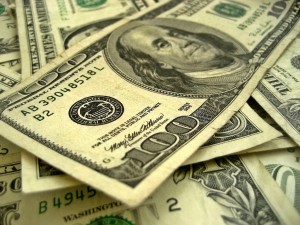This post has already been read 13566 times!
 How can you run the retail supply chain simply and efficiently? You may find the answer in the way you do your own personal budgeting and cash planning. After all, wouldn’t you agree that product is essentially just money in a different form?
How can you run the retail supply chain simply and efficiently? You may find the answer in the way you do your own personal budgeting and cash planning. After all, wouldn’t you agree that product is essentially just money in a different form?
To illustrate this, start by digging out one of your bank statements. A bank statement is
nothing more than a historical view of your account activity. For each date, it shows you
when money was removed (withdrawals), when money was added (deposits) and how
much money you had as a result (balance).
You could also project your deposits and withdrawals to forecast your bank balance into the future. What’s great is that the rule for calculating the balance in any time period is very simple, so it’s easy to simulate what will happen under various scenarios.
Most people do, or have done, some form of household budgeting. Your pay check
probably arrives on a standard cycle (e.g. weekly or bi-weekly) and most bills are due at the same time every month (mortgage on the 1st, electric on the 15th, etc). Sure, your electric won’t be exactly the same every month, but you can probably use
historical usage activity as a guide to come up with a fairly accurate estimate.
If you project your budget into the future, you can know with a fair degree of accuracy what your bank balance will be on any given day of the month. For example, it might look like this:
| Date | Item | Withdrawal | Deposit | Balance |
| Jan 1 | Opening Balance | $2252.43 | ||
| Jan 2 | Mortgage payment | $1085.00 | $1257.43 | |
| Jan 7 | Pay check | $1421.60 | $2679.03 | |
| Jan 12 | Credit card payment | $99277 | $1686.26 | |
| Jan 15 | Electric | $56.82 | $1629.44 | |
| Jan 21 | Pay check | $1421.60 | $3051.04 | |
| Jan 23 | $67.89 | $2983.15 | ||
| Jan 31 | Retirement savings | $750.00 | $2233.15 |
As time ticks by, you can even update your projections on a daily or weekly basis as you get better information (e.g. when your actual electric bill arrives 3 weeks prior to the due date, it may turn out to be higher or lower than what you budgeted) and recalculate your future balances. Planning ahead in this fashion allows you to:
- add more cash to the account (through transfers from other accounts or borrowing) before checks start bouncing
- proactively keep your balance above the required minimum level to avoid bank fees
- see the impact of unexpected events on your future cash flow
- see opportunities to move excess cash into higher yielding investments or a savings account
You can also use this exact same process to project even further ahead to do more long term budgeting. Maybe you’re saving for a down payment for a house. Maybe you want to buy a boat or a motorcycle in the summer. You’d use a similar approach, right? Projecting your cash balance into the future to see if you’ll have the funds available when you need them. So what does this have to do with the retail supply chain? In a word: everything.
Is there any fundamental difference between an inventory balance and a bank account? In the retail supply chain, each item at each location experiences withdrawals (sales), deposits (receipts) and has a balance (on-hand inventory).
Suppose, for every item at every store, you could forecast your sales (or withdrawals) for several weeks or months into the future. Just like planning your cash flow, you would also re-forecast as better information becomes available. Further suppose that you can set safety stock policy (or planned minimum balance) based on demand rate and/or merchandising requirements for each item/store.
You now have all the information you need to use banking logic to schedule future receipts (deposits) to arrive at the store just as your sales (withdrawals) are projected to draw your inventory balance to your desired minimum stock level. Receipts can be easily converted into shipments from their source. The end result of this forward planning activity may look like this:
Product # 12-3456
Store #789
| Date | Transaction | Projected Sales | Projected Receipts | Balance |
| Jan 1 | Current onhand | 140 | ||
| Jan 2 | Sales forecast | 25 | 115 | |
| Jan 9 | Sales forecast | 40 | 75 | |
| Jan 12 | Planned arrival from DC | 50 | 125 | |
| Jan 16 | Sales fcast(promotional) | 75 | 50 | |
| Jan 21 | Planned arrival from DC | 65 | 115 | |
| Jan 23 | Sales forecast | 15 | 100 | |
| Jan 30 | Retirement savings | 20 | 80 |
Kinda like your cash budget, right?
Just like using a budgeting process to manage your cash flow, planning your inventory throughout the supply chain in this manner allows you to:
- plan inventory to arrive in the store before you run low on stock (especially during promotions or seasonal merchandise set-ups)
- proactively keep your inventory at or above what’s required to have attractive displays and/or high levels of customer service
- see the impact of unexpected events on your future inventory balance
- see opportunities to move dead stock into markets where it’s actually selling
Over a longer time horizon, these projections can be used to aid in decisions to free up
capacity, make channel choices or plan resources.
It’s simple, sensible and intuitive.
It’s also universally applicable to every inventory pool in the supply chain – be it at a retail store, web fulfillment centre or warehouse. After all, wouldn’t you manage each of your bank accounts the same way, regardless of their balances or number of transactions?
Our advice is simple: Manage your supply chain the same way you manage your own
money!
- Small Data, Big Insights - July 14, 2016
- Is Flowcasting the Supply Chain Only for the Few? - June 3, 2016
- Philosophy - February 12, 2016
